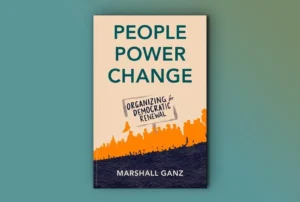
February 4, 2014; The Atlantic
As a Peace Corps Volunteer in the Dominican Republic from 2002 through 2004, one of my key responsibilities was drinking coffee. Every day for two years, I walked to the houses of the women I worked with and chatted over coffee. The conversations started off on a light note; we discussed topics such as the weather, local politics, or what was happening with members of the family. Eventually, the conversations deepened and the women shared with me what was happening in their businesses and their hopes and dreams for the future. As the conversations deepened, so, too, did our relationship. By the end of my two years in country, the women trusted me and, more importantly, they trusted the business education–training program we developed together.
This relationship-based method, an approach that can lead to deep and lasting results, is being used by community health workers all over the globe. In Ethiopia, for example, community health workers have contributed to the two-thirds reduction in child mortality since 1990.
India boasts more than 800,000 “accredited social health activists” and Malawi has more than 11,000 of what they call “health extension workers.” Ethiopia has about 38,000 community healthcare workers, the same number as in the United States.
In some countries, the role of a community healthcare worker is clearly defined. There may be a formal training program that teaches workers to do such tasks as checking blood sugar levels, discussing hygiene and sanitation, and inquiring about birth control prescriptions. Some health workers in rural areas are trained to deliver babies.
Sign up for our free newsletters
Subscribe to NPQ's newsletters to have our top stories delivered directly to your inbox.
By signing up, you agree to our privacy policy and terms of use, and to receive messages from NPQ and our partners.
Whether the program is clearly defined or not, the function of community health workers is still paramount. According to the 1998 National Community Health Advisor Study, such workers play the following critical roles:
- Bridging and providing cultural mediation between communities and health and social service systems
- Providing culturally appropriate health education and information
- Ensuring people get services they need
- Providing informal counseling and social support
- Advocating for individual and community needs
- Providing direct service, such as basic first aid and administering health screening tests
- Building individual and community capacity
The success of community healthcare workers may depend upon a delicate balance of personal and professional status. Dr. Prabhjot Singh, Columbia University’s chairman of the One Million Health Worker Campaign, says, “The area where community health workers catch on is where they retain their community identity and their advocacy for their community and yet have a sharply defined role in their health care system.”
It is easy to see how community healthcare workers make logistical and financial sense in rural areas, but one might wonder why the United States would need 38,000 when clinics and hospitals are more easily accessible than in some developing nations. Think of it this way: the distance between a patient and a doctor is not always physical. There are cultural, social, economic, and personal barriers as well. Imagine, for example, a transgender individual who has had negative experiences with healthcare providers, or a low-income family that is living in their car and cannot afford gas to get to the clinic. A caring, compassionate healthcare worker may make all the difference.
Community health workers also save taxpayers money. It is far less expensive to treat someone in the home or in a primary care setting than in an acute setting such as the emergency room. In fact, the American Public Health Association released a study in 2009 indicating that by increasing access to primary care rather than urgent or acute hospital care, community health workers in Denver saved $2.28 for each $1 spent.
The Affordable Care Act recognizes the value of community health workers but, according to Dr. Nell Brownstein from the Centers for Disease Control and Prevention’s Division for Heart Disease, there have been no funding-related decisions.
This is worth our attention. If we want to curb long-term healthcare costs, it may be wise to include, metaphorically speaking, a pair of walking shoes and a pound or two of coffee in the budget.—Jennifer Amanda Jones












